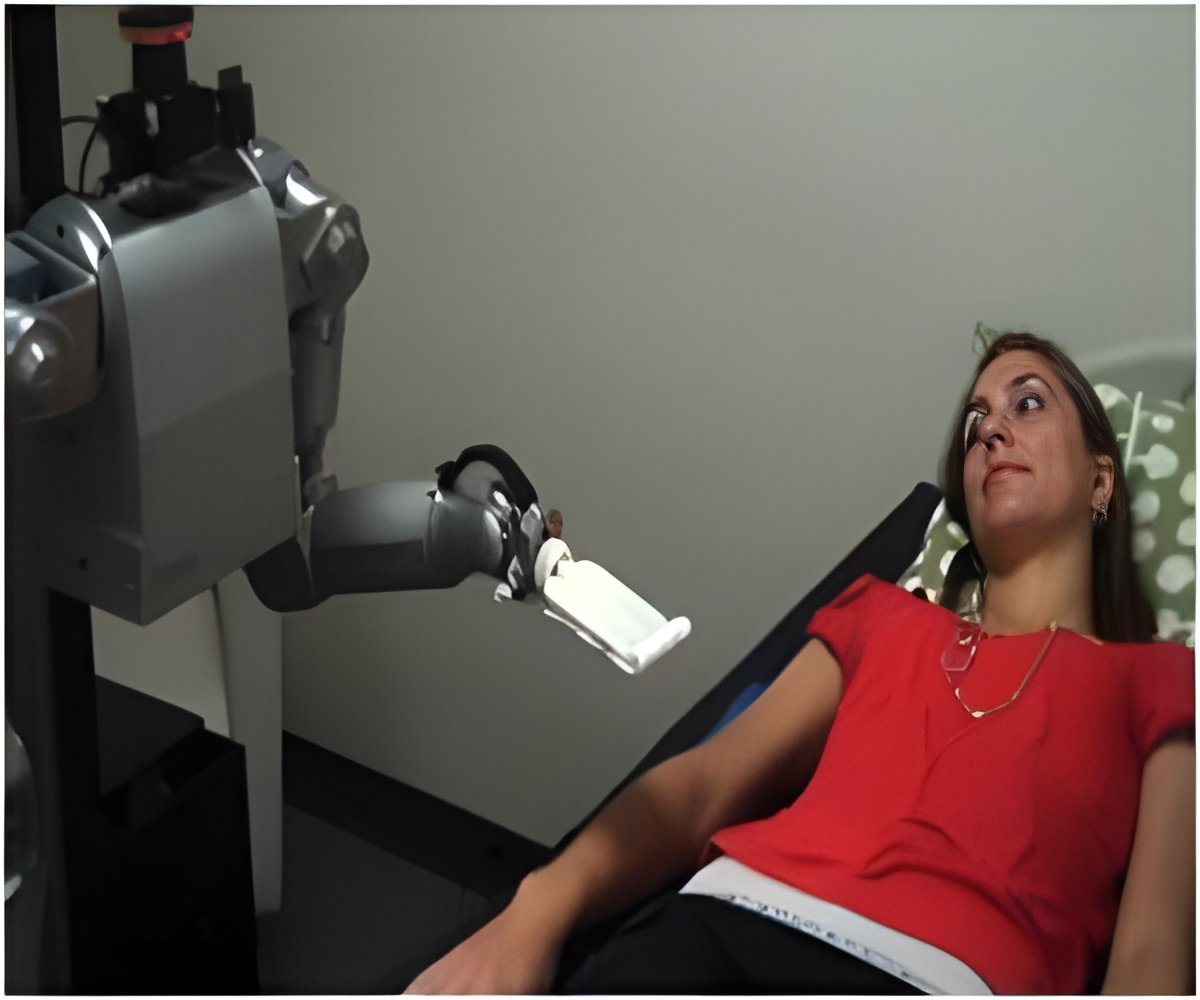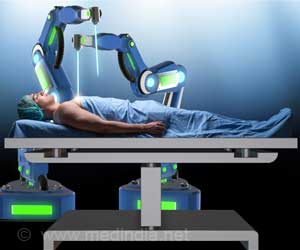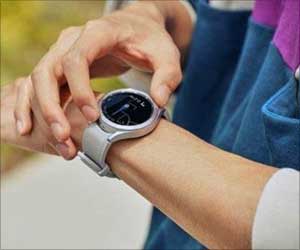
"Our project has shown that we can interpret signals from neurons with a simple computer algorithm to generate sophisticated, fluid movements that allow the user to interact with the environment," said senior investigator Jennifer Collinger, Ph.D., assistant professor, Department of Physical Medicine and Rehabilitation (PM&R), Pitt School of Medicine, and research scientist for the VA Pittsburgh Healthcare System.
In February 2012, small electrode grids with 96 tiny contact points each were surgically implanted in the regions of trial participant Jan Scheuermann's brain that would normally control her right arm and hand movement.
Each electrode point picked up signals from an individual neuron, which were then relayed to a computer to identify the firing patterns associated with particular observed or imagined movements, such as raising or lowering the arm, or turning the wrist. That "mind-reading" was used to direct the movements of a prosthetic arm developed by Johns Hopkins Applied Physics Laboratory.
Within a week of the surgery, Ms. Scheuermann could reach in and out, left and right, and up and down with the arm to achieve 3D control, and before three months had passed, she also could flex the wrist back and forth, move it from side to side and rotate it clockwise and counter-clockwise, as well as grip objects, adding up to 7D control. Those findings were published in The Lancet in 2012.
"In the next part of the study, described in this new paper, Jan mastered 10D control, allowing her to move the robot hand into different positions while also controlling the arm and wrist," said Michael Boninger, M.D., professor and chair, PM&R, and director of the UPMC Rehabilitation Institute.
Advertisement
Source-Eurekalert








